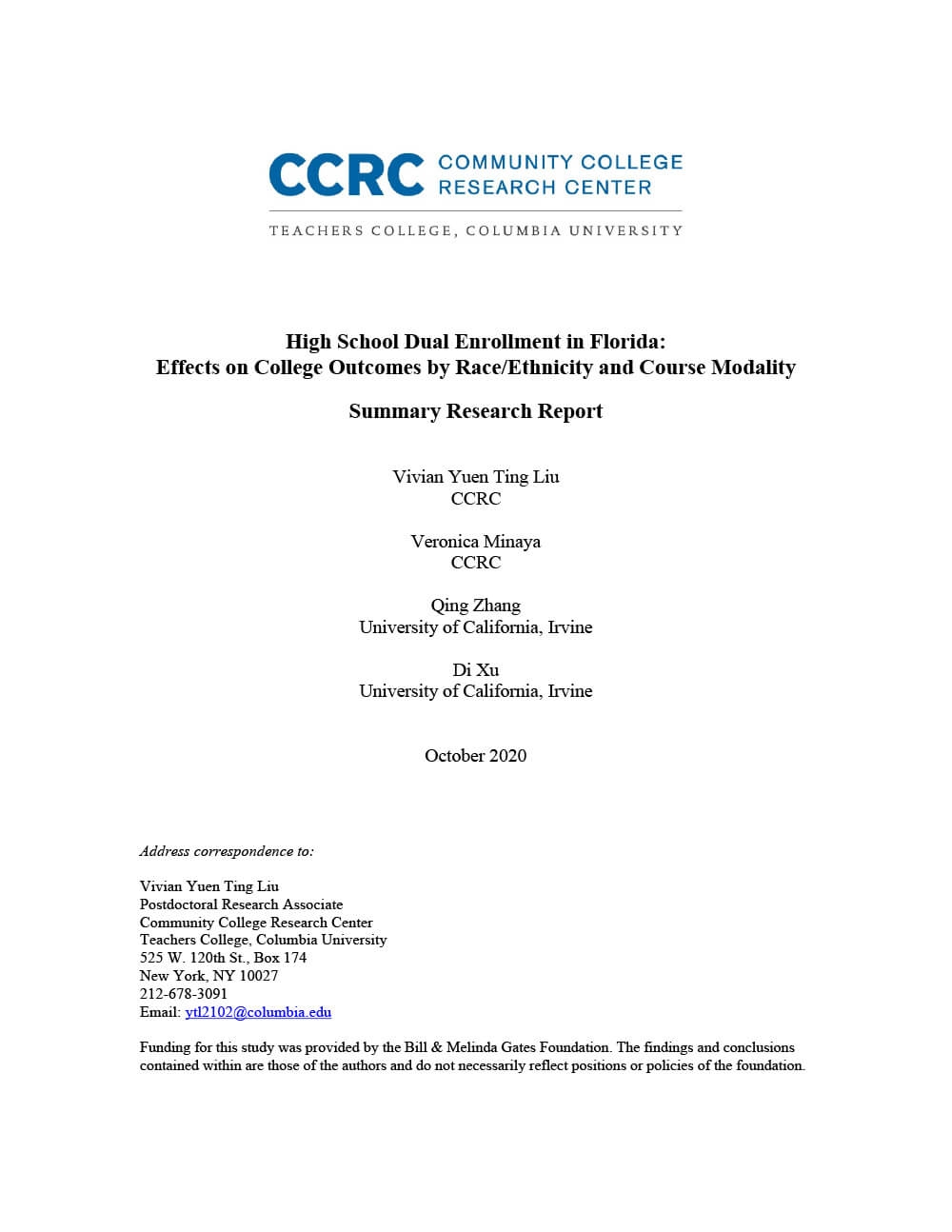
This report presents findings on the relationship between taking community college dual enrollment courses—in which high school students earn high school and college credits simultaneously—and college outcomes among Florida public high school students. It analyses dual enrollment course-taking by racial/ethnic group (Black, Hispanic, White) and course modality (face-to-face on-college-campus, face-to-face off-campus, and online). The report includes (1) a descriptive analysis of the demographic characteristics and outcomes of dual enrollment participants and (2) multivariate regression analyses of the associations between dual enrollment participation and college outcomes, controlling for a rich set of student and school characteristics. The analyses use transcript-level unit record data on two cohorts of Florida students who started public high school in 2007 and 2012 and were tracked through high school and into Florida state colleges (community colleges) and universities.
The authors find that Florida high school students who took dual enrollment courses were more likely to be White, female, and from more affluent backgrounds than those who did not take dual enrollment courses. They also find that taking dual enrollment courses is associated with better college outcomes for all racial/ethnic groups considered, and that the effects of dual enrollment are mediated by course modality, such that taking courses online is associated with slightly smaller benefits than taking courses face-to-face.
